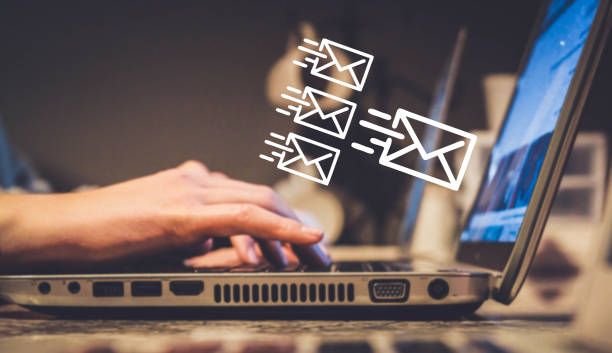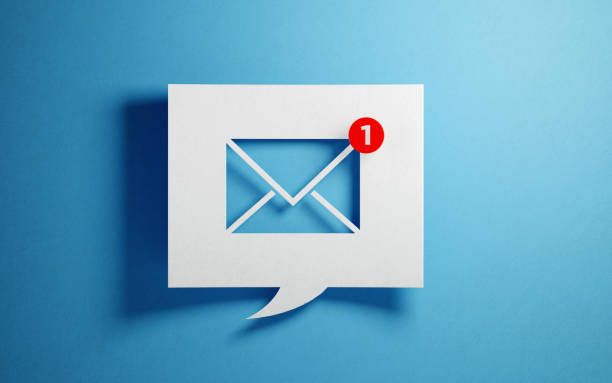In today's digital age, email has become a crucial communication tool for individuals and businesses alike. However, with the rise of phishing attacks and email spoofing, ensuring the authenticity and deliverability of your emails has never been more critical. This is where DomainKeys Identified Mail (DKIM) comes into play. In this comprehensive guide, we will delve into the world of DKIM and explore the importance of using an email checker for DKIM verification. Prepare to enhance your email security and sender reputation as we unravel the secrets of mastering DKIM.
Understanding DKIM

DKIM, short for DomainKeys Identified Mail, is an email authentication method designed to verify the authenticity of the sender and the integrity of the email's content. It works by adding a digital signature to the email header, which can be verified by the recipient's email server. This cryptographic signature acts as a digital fingerprint, ensuring that the email has not been modified in transit and that it originates from an authorized sender.
Implementing DKIM involves generating a pair of cryptographic keys—a private key and a public key. The private key remains securely stored on the sender's server, while the public key is published in the sender's DNS records. When an email is sent, the sender's server signs the email using the private key, and the recipient's server verifies the signature using the public key. This process ensures that the email has not been tampered with and increases the chances of the email being delivered to the recipient's inbox.
The Importance of DKIM Verification

Verifying the DKIM signature of incoming emails plays a crucial role in email security and deliverability. By validating the DKIM signature, the recipient's email server can determine if the email is legitimate and originated from the claimed sender. This verification process helps combat phishing attacks, email spoofing, and ensures that the recipient receives genuine emails.
By deploying an email checker for DKIM verification, you can automate and simplify the process of checking DKIM signatures. An email checker examines the DKIM signature in the email header, retrieves the public key from the sender's DNS records, and verifies the authenticity of the email. This verification process helps maintain the integrity of your email communication, build trust with your recipients, and safeguard your sender reputation.
Choosing the Right Email Checker for DKIM Verification

When it comes to selecting an email checker for DKIM verification, it's essential to choose a reliable and robust tool. Here are some key factors to consider:
a. Comprehensive DKIM Validation: Ensure that the email checker performs thorough DKIM validation, including verifying the signature, retrieving the public key, and authenticating the email.
b. User-Friendly Interface: Look for an email checker that offers a user-friendly interface, making it easy to understand the verification results and take appropriate actions.
c. Additional Email Checks: Consider an email checker that offers additional checks like SPF (Sender Policy Framework) and DMARC (Domain-based Message Authentication, Reporting, and Conformance), as these protocols complement DKIM in ensuring email security.
d. Integration Capabilities: If you have an existing email infrastructure or email service provider, check if the email checker can seamlessly integrate with your current setup.
e. Reputation Monitoring: Some email checkers provide reputation monitoring features that help you monitor your sender reputation and take proactive measures to maintain deliverability.

Expert Tips for Enhanced Email Security

To maximize the benefits of DKIM and ensure robust email security, consider implementing the following expert tips:
a. Implement DMARC: DMARC works alongside SPF and DKIM to provide an additional layer of email authentication. It allows you to specify how your email should be handled if it fails authentication, helping you protect your brand and recipients from email-based attacks.
b. Regularly Monitor DKIM Signatures: Continuously monitor the DKIM signatures of your outgoing emails to ensure that they remain valid. Any changes in the DKIM signature should be promptly investigated and addressed to maintain email deliverability.
c. Rotate DKIM Keys: Periodically rotating your DKIM keys adds an extra layer of security. By generating new keys and updating the DNS records, you can mitigate the risk of compromised keys and enhance the security of your email communication.
d. Educate Your Users: Phishing attacks often target end-users. Educate your staff and recipients about email security best practices, including being cautious of suspicious emails, avoiding clicking on unknown links, and reporting any suspicious activities.
e. Monitor Sender Reputation: Keep a close eye on your sender reputation by monitoring bounce rates, spam complaints, and engagement metrics. High-quality content, engaged recipients, and following email best practices can help maintain a positive sender reputation.
Frequently Asked Questions
Can DKIM prevent all email-based attacks?
While DKIM provides an additional layer of email security, it does not guarantee absolute protection against all email-based attacks. DKIM primarily focuses on verifying the authenticity and integrity of the email's content and the sender's identity. To enhance email security, it's crucial to combine DKIM with other email authentication protocols such as SPF and DMARC.
What happens if an email fails DKIM verification?
If an email fails DKIM verification, it indicates that the email may have been tampered with or that it did not originate from an authorized sender. Depending on your email server's configuration, the email may be flagged as suspicious, marked as spam, or rejected altogether. Regularly monitoring DKIM failures can help identify any potential issues and take appropriate actions to rectify them.
Can I use DKIM for all types of email, including marketing campaigns?
Absolutely! DKIM can be used for all types of email, including marketing campaigns, transactional emails, and personal correspondence. Implementing DKIM ensures that your emails maintain their integrity, are less likely to be flagged as spam, and increases the chances of them reaching the recipient's inbox.
Is DKIM supported by all email service providers?
Most reputable email service providers support DKIM and provide easy-to-use interfaces to enable DKIM signing and verification. However, it's recommended to check with your specific email service provider or consult their documentation to ensure DKIM support and understand the configuration process.
Conclusion
Implementing DKIM and utilizing an email checker for DKIM verification is a powerful strategy to enhance your email security, protect against phishing attacks, and maintain a positive sender reputation. By understanding the importance of DKIM, choosing the right email checker, and following expert tips, you can master the art of DKIM and ensure the authenticity and deliverability of your emails. Embrace the power of DKIM and take your email communication to new heights of security and reliability.

